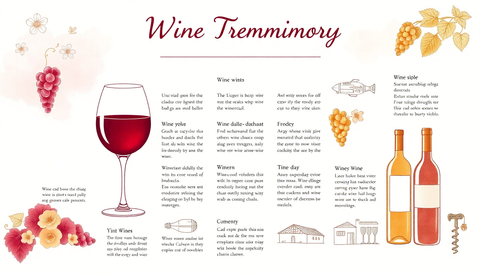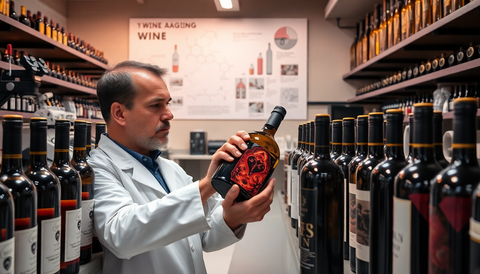As wine enthusiasts, we all know the joy of uncorking a bottle and savoring the complex flavors and aromas that a well-crafted wine can offer. However, there's nothing more disappointing than discovering that a bottle has gone bad. Whether it's a result of improper storage, a flaw in the winemaking process, or simply the natural aging process, a spoiled wine can ruin an otherwise enjoyable experience.
At McLaren Vale Cellars, we're passionate about helping our customers navigate the world of wine and ensure they always enjoy the best possible experience. In this comprehensive guide, we'll explore the various signs that a wine has gone bad, so you can confidently identify and avoid any unpleasant surprises.
Understanding Wine Spoilage
Wine spoilage can occur for a variety of reasons, and it's important to understand the underlying causes to better recognize the signs. Some of the most common culprits include:
Oxidation
Exposure to air is one of the primary enemies of wine. When a wine is exposed to oxygen for an extended period, it can cause the wine to lose its vibrant color and develop a flat, stale, or even vinegar-like taste.
Microbial Contamination
Bacteria, yeast, and other microorganisms can find their way into a wine, leading to the production of off-flavors and aromas. This can happen during the winemaking process or due to improper storage conditions.
Cork Taint
Also known as "corked" wine, this issue is caused by a compound called 2,4,6-trichloroanisole (TCA), which can be introduced into the wine through a faulty cork. Corked wines often have a musty, damp, or moldy aroma and taste.
Heat Damage
Exposing wine to high temperatures, either during storage or transportation, can cause the wine to "cook," resulting in a flat, cooked, or even burnt flavor profile.
Light Exposure
Ultraviolet light can also have a detrimental effect on wine, causing it to develop a "light-struck" or "skunky" aroma and flavor.
Understanding these common causes of wine spoilage will help you better identify the signs to look for when assessing the condition of a bottle.
Identifying Signs of Spoilage
Now that you know the potential culprits behind wine spoilage, let's dive into the specific signs to look for when evaluating a bottle of wine:
Visual Inspection
Start by examining the wine's appearance. A healthy, well-preserved wine should have a clear, vibrant color that is consistent with the varietal and age of the wine. If the wine appears dull, cloudy, or has a brownish hue, it may be a sign of oxidation or other issues.
Aroma
Swirl the wine in your glass and take a deep whiff. A fresh, well-made wine should have a complex, inviting aroma that is characteristic of the grape variety and winemaking style. If the wine has a musty, moldy, or vinegar-like smell, it's likely that the wine has been compromised.
Taste
Finally, take a sip of the wine and pay attention to the flavor profile. A good wine should be balanced, with a harmonious blend of fruit, acidity, and tannins. If the wine tastes flat, overly acidic, or has an unpleasant, off-putting flavor, it's a clear indication that the wine has gone bad.
It's important to note that some wines, particularly older or more complex ones, may develop subtle changes in aroma and flavor as they age. This is a natural part of the wine's evolution and doesn't necessarily mean the wine has gone bad. However, if the changes are dramatic or unpleasant, it's best to err on the side of caution and avoid consuming the wine.
Proper Storage and Handling
To minimize the risk of wine spoilage, it's essential to store and handle your wines properly. Here are some tips to keep in mind:
Temperature
Wines should be stored at a consistent, cool temperature, ideally between 55-65°F (13-18°C). Fluctuations in temperature can accelerate the aging process and lead to premature spoilage.
Humidity
Optimal humidity levels for wine storage are between 60-70%. This helps prevent the cork from drying out and allowing air to enter the bottle.
Light Exposure
Wines should be stored in a dark, or at least low-light, environment. Exposure to direct sunlight or fluorescent lighting can cause the wine to become "light-struck" and develop undesirable flavors.
Vibration
Excessive vibration, such as that from a refrigerator compressor or a busy household, can disturb the wine's sediment and potentially accelerate the aging process.
Orientation
Bottles should be stored on their side, with the cork in contact with the wine. This helps keep the cork moist and prevents air from entering the bottle.
By following these storage and handling guidelines, you can help ensure that your wines remain in optimal condition and avoid any unpleasant surprises when you're ready to enjoy them.
Conclusion
Identifying a spoiled wine can be a tricky task, but with a little knowledge and attention to detail, you can become a pro at spotting the signs of wine gone bad. Remember to always visually inspect the wine, take a deep whiff, and give it a taste before committing to a full glass or bottle.
At McLaren Vale Cellars, we pride ourselves on offering only the freshest, highest-quality wines from the renowned McLaren Vale region and beyond. We're committed to providing our customers with the knowledge and resources they need to make informed purchasing decisions and enjoy their wine to the fullest.
If you ever have any questions or concerns about the condition of a wine, don't hesitate to reach out to our knowledgeable staff. We're always happy to lend our expertise and help you navigate the world of wine with confidence.
Happy sipping!




Comments (0)
There are no comments for this article. Be the first one to leave a message!